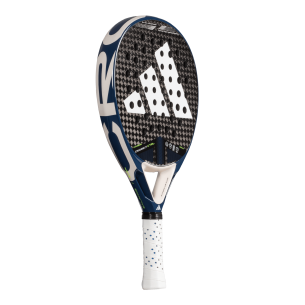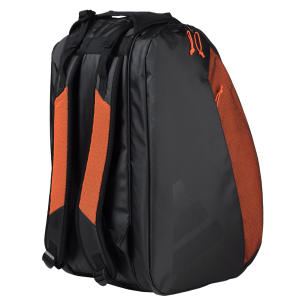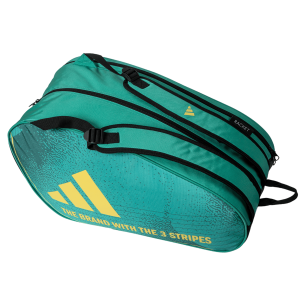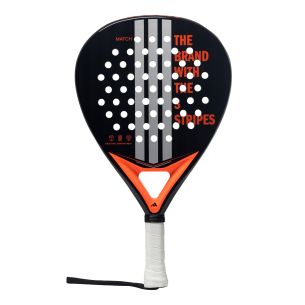
Adequate hydration in padel to combat sun exposure
Currently, in the world of padel, outdoor courts continue to predominate over indoor ones. Spain is one of the sunniest countries in Europe, with an average of 300 sunny days per year. It is true that this can vary depending on the geographical location, but no one doubts that the climate, like that of other similar countries, favours the practice of padel in an outdoor setting.
Sun exposure has a beneficial effect on our body, according to multiple studies. As regards health, it has been shown that sunlight is of great importance to avoid Vitamin D deficiency and maintain optimal calcium metabolism, essential for its subsequent incorporation into our bones.
For all these reasons, playing padel outdoors and in sunny conditions is a good option. However, there are a number of issues to take into account and one of the main ones is hydration.
Adequate hydration
As in any sporting activity, hydration in padel is essential. But how do you hydrate? Well, it depends on the individual physiological conditions, the time of the season, the training and the competition period in which you find yourself. What is clear is that performance in padel is usually associated with good hydration.
The rate of sweat during exercise can go from 1 litre per hour to even 3 litres per hour, depending on the demands of the exercise and the weather conditions. Sweating is the most efficient mechanism for cooling the ski. It is essentially the loss of internal liquid through the evaporation of sweat. When this mechanism begins to decrease in effectiveness, the body's internal temperature rises and the dreaded 'heat stroke' may appear.
A padel player, whether amateur or professional, must be well hydrated throughout the day, that is, before, during and after the game or training. In each phase, a series of steps must be followed:
- Before the game: Arriving well hydrated to the game is key, but how can you know if you meet this requirement? Variation in body weight can be used as an indicator of adequate hydration. A person is considered to be properly hydrated if their weight in the morning on an empty stomach is stable: it varies less than 1% from day to day (in women a small variation must be taken into account depending on the phase of the menstrual cycle). Normally, if enough liquid is ingested and there is an adequate rest period (at least 8 hours) since the last training session, the athlete is well hydrated. If this is not the case, it is recommended to carry out a pre-hydration programme. For this we must slowly drink a quantity of water of 5 to 7 millilitres per kilogram of weight. This should be distributed in the 4 hours prior to starting exercise, in several doses every 15 minutes. Beyond practice, in hot and humid environments, it is convenient for every player to drink about half a litre of liquid with mineral salts during the hour prior to the start of the game. Improving the taste of fluids is one way to promote their consumption.
- During the match: 30 minutes after the start of the game, it becomes necessary to compensate for the loss of fluids, and after an hour this becomes essential. It is recommended to drink between 6 and 8 millilitres per kilogram of weight and hour of exercise (approximately half a litre per hour or 150-200 millilitres every 20 minutes). The ideal temperature of the liquids should be between 15-21 degrees. Colder drinks slow absorption, while hotter drinks are unappetizing, so less will be drunk.
- After the game: Rehydration should start as soon as the exercise is finished. The fundamental objective is the immediate restoration of physiological, cardiovascular, muscular and metabolic function. If the weight loss during training or competition has been greater than 2% of body weight, it is advisable to drink, even if you are not thirsty, and add more salt to your food. It is recommended to ingest at least 150% of the weight loss in the first 6 hours after exercise, to cover the liquid eliminated both through sweat and urine and thus restore the water balance. For all this, post-exercise rehydration drinks should contain both sodium and carbohydrates, and should be started as soon as possible.
Sunstroke or Heat Stroke
Inadequate or non-existent hydration can cause, together with too much sun exposure, the appearance of sunstroke or heat stroke. It is defined as the situation in which our body loses control over the self-regulatory mechanism of our body temperature, rising alarmingly. It is an emergency that must be faced from the outset, as it can have very serious consequences.
It usually happens in matches or tournaments over the summer months, especially in the middle hours of the day. Contrary to what people believe, heat stroke does not require the action of the sun. It is a situation that can occur on indoor courts with insufficient ventilation.
If this situation arises, the player needs to be placed in a cool spot under the shade and the emergency services notified for possible serious complications. After placing the player in the recovery position (semi-lying to one side), we will cool down the player with towels soaked in cool or cold water, even wetting his clothes. We will also place ice on their forehead and neck. Only when the player begins to recover (never in a semi-conscious or unconscious state) will we move on to the hydration phase with liquids that are not too cold.
Heat strokes occur in extreme situations. If we hydrate ourselves correctly following the steps described in this article, we don't have to worry. Therefore, it is very important to give hydration the importance needed. It is a way to guarantee that we will enjoy padel in a completely safe way.











